There are many physical phenomena that generate heat. Friction in combustion engines is a good example, but it is just as common for desktop and laptop owners. Almost all modern electronics is based on the use of components such as diodes or transistors, which can get very hot despite the lack of mechanical work. Their overheating leads to such undesirable consequences as freezing or spontaneous restart of the PC, which greatly complicates, and in some cases makes it impossible to work at the computer.
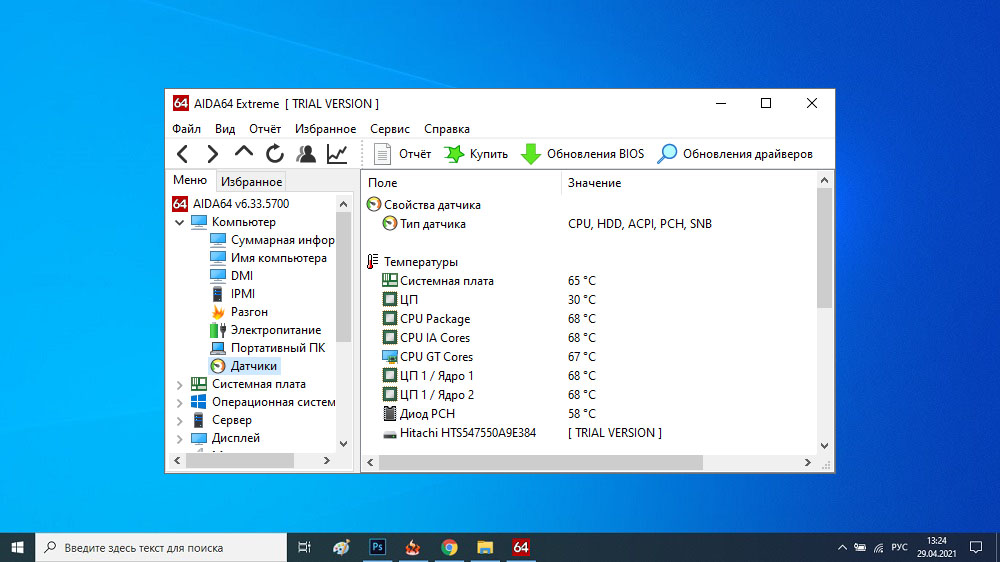
Therefore, it is so important to have a convenient tool for controlling the temperature of the main sources of overheating – the central and graphic processor, as well as the motherboard chipset. The most popular utility AIDA64 is one of such tools that allows you to measure many hardware components of your computer in real time, test the speed of the CPU, memory, disk subsystem, video card, and perform a number of other actions. For this, sensors built into the iron are used, which are thermotransistors, the value of the current passing through which depends on the temperature.
Contents
How to interpret cpu diode parameter in AIDA64
As you might guess, the AIDA64 CPU diode is the temperature characteristic of the CPU heating. It is not difficult to see the readings of this sensor – in the “Computer” tab of the utility there is an item “Sensors”, by clicking on which, you can view the temperatures of all very hot computer components in the right block. But, in addition to the degree of heating of the CPU itself or even its individual cores, the “CPU diode” parameter may be present in this list. And at the same time, its readings may differ from the temperature of the CPU. A discrepancy of several degrees is considered normal, since the “CPU diode” sensor is built into the processor itself, and those sensors that measure the temperature of the CPU are physically located under it, directly in the socket.
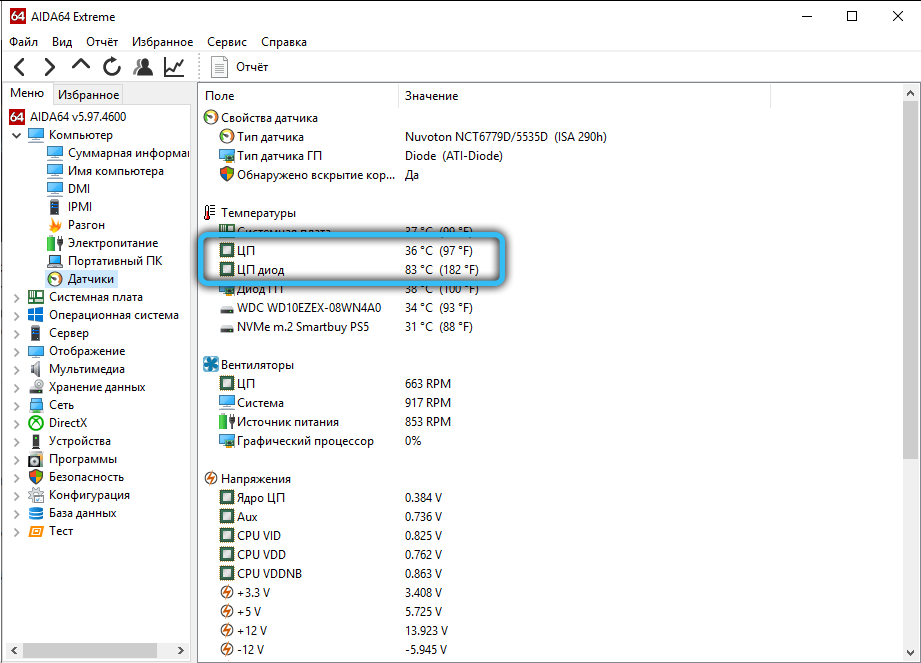
What temperature should you focus on? The one indicated in AIDA64 without the “diode” prefix. It is believed that the CPU diode is less stable. This means that if the difference between the readings is large, you should trust the temperature of the processor, not the diode. The latter can be “buggy” due to the following reasons:
- physical malfunction;
- the AIDA64 utility interprets the data from the sensor incorrectly;
- finally, the sensor may simply be absent (a temperature diode built into the processor is installed only in AMD products, in Intel CPUs there are only sub-socket sensors), and then Aida64 will show something incomprehensible at all.
What is the “GPU diode” parameter in AIDA64 responsible for?
There is a temperature sensor on the video card, or rather, on its processor. And since it often works with no less load than the central processor, it also tends to get very hot. In some cases, the heating becomes critically high, which leads to a strong deceleration of the computer, to its freezing or going into a reboot. This happens especially often in summer, when there is no ventilation in the room and the air warms up to 28-30 ° C. Often the same problems are experienced by fans of “serious” computer games.
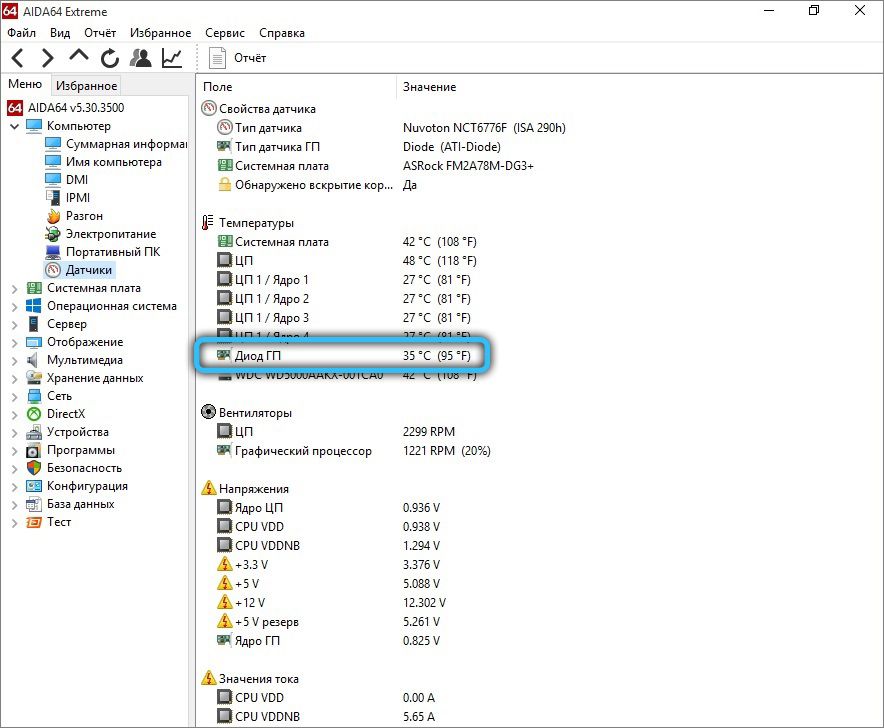
Does this mean that if the GPU diode in AIDA64 shows temperatures under 100 degrees, then this can lead to the failure of the GPU or video card? By and large, you should not worry about this, since there is built-in overheating protection that will prevent the GPU from burning out. But freezes and reboots by themselves are a rather unpleasant thing, besides, constant overheating negatively affects the resource of electronic components.
What is PCH Diode in AIDA64
Along with sensors that measure the temperature of the CPU and GPU, there is an analogue for monitoring the temperature of the chipset.
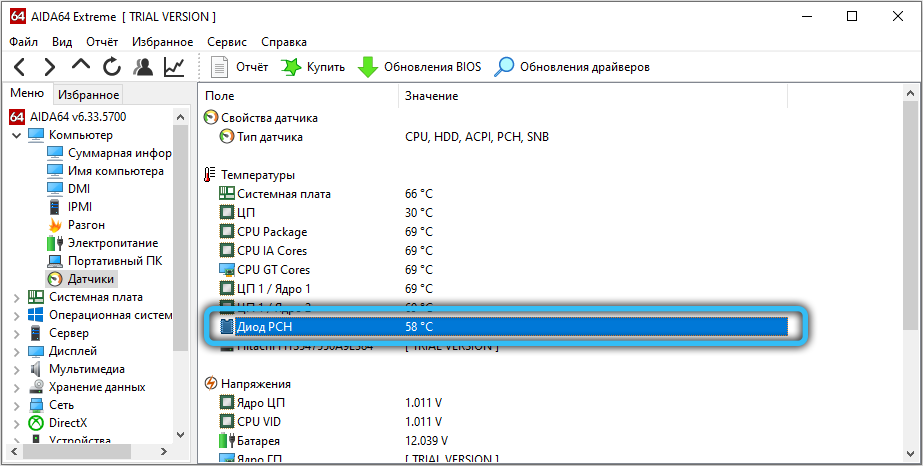
The term PCH itself stands for Platform Controller Hub, and it should be understood as an element of system logic responsible for the consistency of the functioning of different elements of the motherboard – USB, SATA buses, peripherals, RAID controller, system clock, etc. In a word, PCH is responsible for the work of all hardware, except for the GPU and memory, which are “in charge” of the central processor. This means that the chipset is also susceptible to heat, and the PCH thermal diode is designed to monitor its temperature readings. True, PCH is a term used only in motherboards from Intel, in motherboards from AMD there is an abbreviation FCH (instead of Platform, the term Fusion is used), and in motherboards from nVidia this element of system logic is called MCP (stands for Media & Communications Processor) …But in the AIDA64 utility they all have the same name – PCH diode.
But that’s not all: on outdated motherboards, the system logic included two bridges, north and south, and it was the second that was responsible for the periphery, so on such motherboards the PCH diode monitors the temperature of the south bridge.
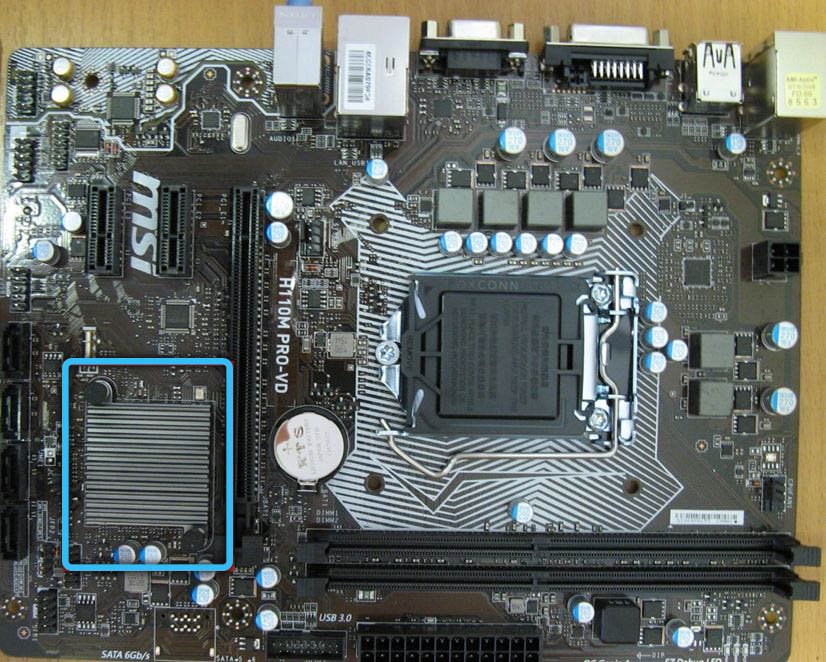
What temperatures should be considered normal
Alas, we are not able to provide any specific values. Not only do different manufacturers have different heat dissipation rates for electronic components, but also within different lines of processors or chipsets, the maximum allowable temperature can have different upper limits. For each specific name, the maximum permissible temperature range is indicated in the product specification on the official website. This setting is usually called TJUNCTION and refers to either the CPU or GPU. So, for a Core i5-6440HQ CPU (mobile version based on the Skylake microarchitecture) TJ is 100 ° C. And if in AIDA64 the “CPU diode” has a value close to this level, the CPU is definitely overheating.
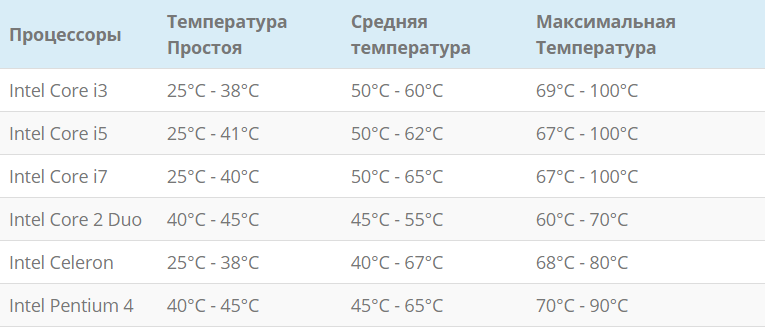
But as for the RSN, you will not be able to find this indicator in the specifications. If you are good at technical English and know where to look, you can probably find the meaning you are looking for in the descriptive documents for specific chips, but even these are not always freely available. Therefore, it is accepted to consider the maximum temperature of the central processor within the same architecture as the admissible temperature for the PCH.
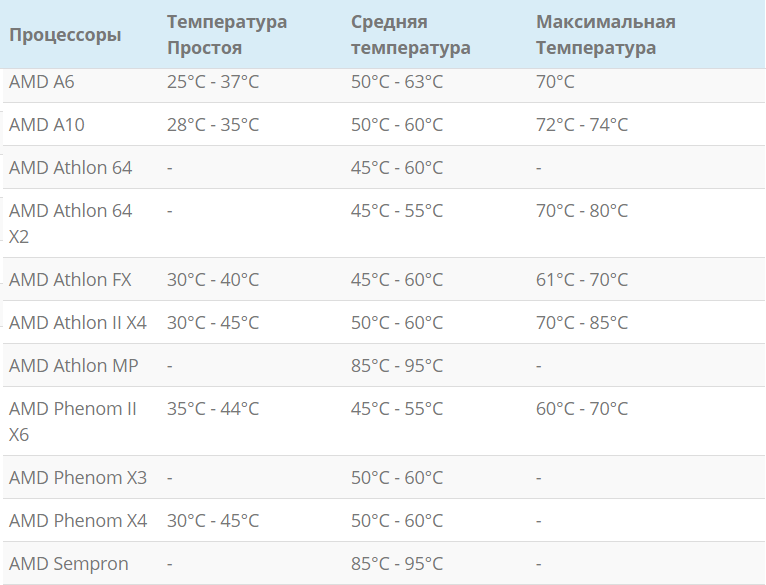
Summarizing the above, we can say that for laptops the normal temperature of the CPU, GPU or PCN is considered to be 45-70 degrees, for a regular desktop PC – 30-60 degrees. Short-term exceeding of nominal temperatures is also not considered a deviation from the norm.

Ways to prevent overheating
If you find out with AIDA64 that your computer is overheating, what steps can you take to remedy the situation?
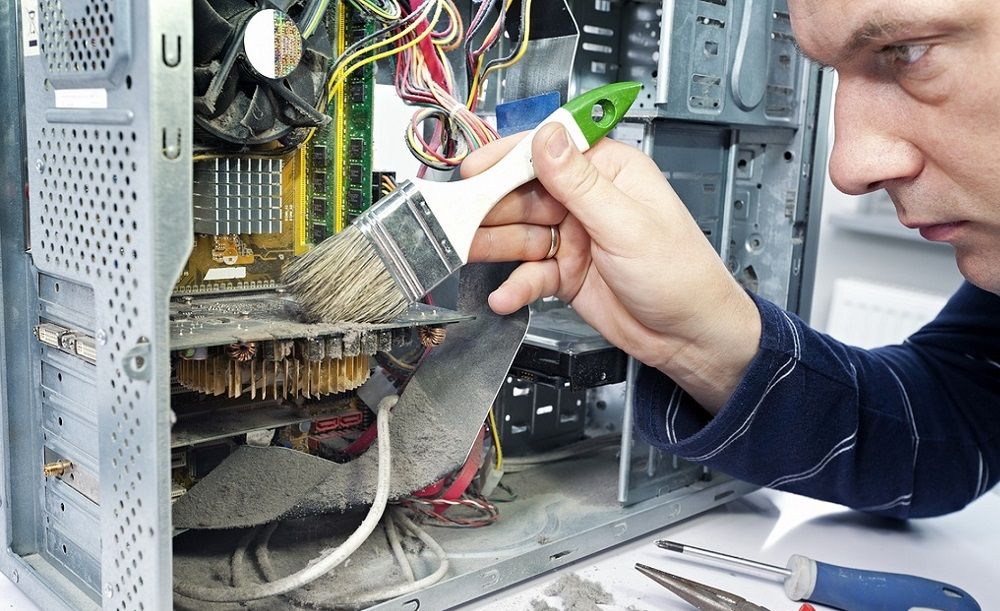
Most often, the reason for the increase in temperature is the contamination of the system unit with dust, especially for budget case options, where minimal attention is paid to protection against pollution. So preventive cleaning of the system unit is an indispensable condition for keeping the PC in good condition. You can also clean a desktop computer yourself, and you need to do this 1-2 times a year. It is more difficult with a laptop, but in principle, any service center performs this procedure for a moderate fee.
The same should be done in case of drying of thermal paste, which happens due to natural reasons. If you know how to remove and then install the chip in its original place, you can update the thermal paste yourself.
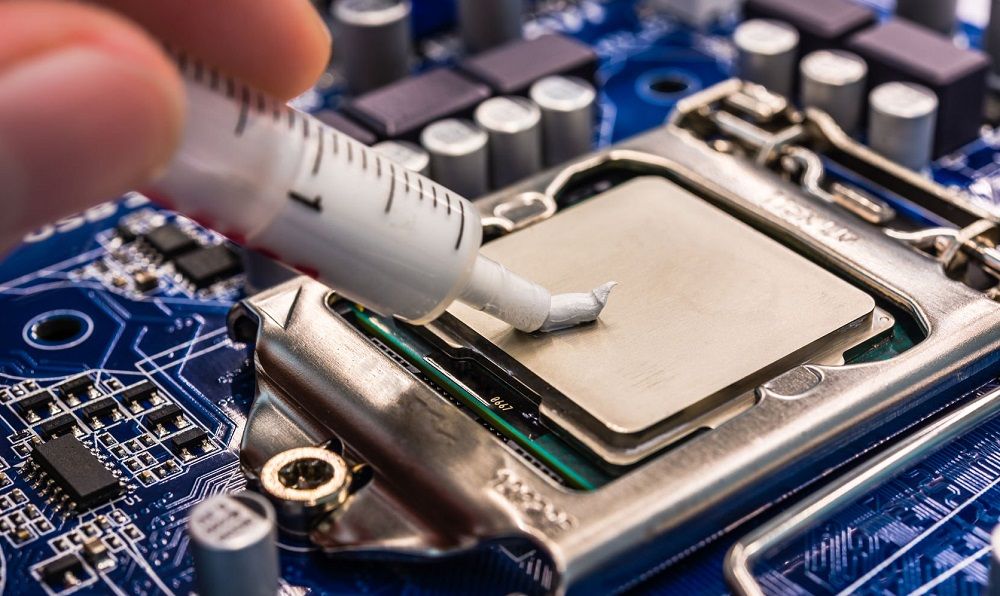
Finally, the cooling system of your computer may no longer cope with its tasks, especially if you were upgrading the hardware (installed a more powerful CPU or another hard drive). In this case, it is advisable to install an additional cooler.
In summer, subject to the safety rules, you can work with an open lid of the system unit, which in any case should not be installed near open heat sources.